Phytotelmata: Miniature Breeding Grounds for Mosquitoes and Rat-tailed Maggots
What can thrive in those standing water puddles?
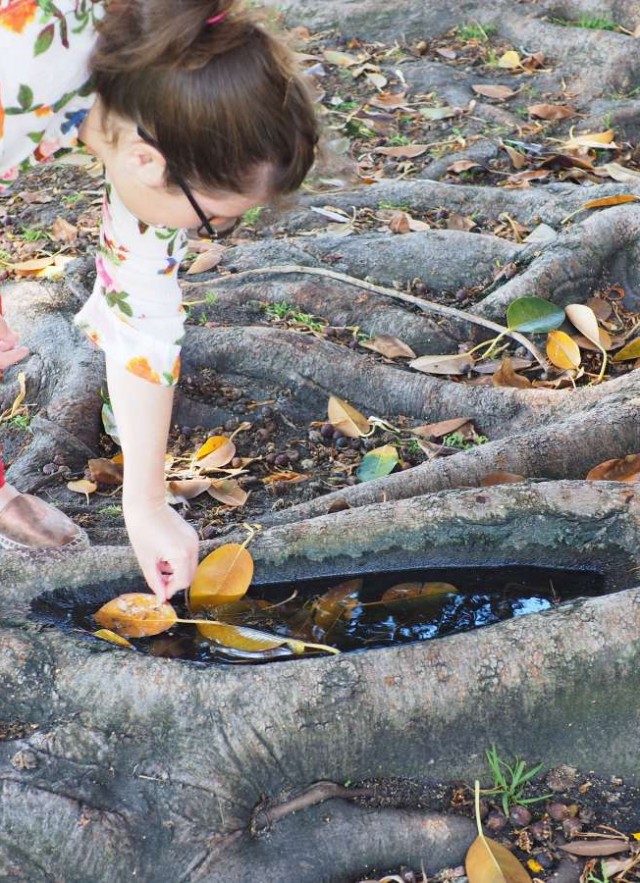
One of the many benefits of doing research in urban environments is the ability to spend a day in "the field" by simply walking out your door. Brian Brown (Curator of Entomology at NHMLA) and I did just that on a recent morning, and found ourselves investigating some unexpected phytotelmata in the exposed roots of large Ficus trees growing in front of the Exposition Park Rose Garden next door to NHM. Phytotelma (plural phytotelmata) is a fancy word that translates as "plant pond" and refers to any captured water environments created by plants. Some plants have evolved specifically for this purpose, like carnivorous pitcher plants . Other phytotelmata are quite accidental, such as holes in logs or trees, bamboo internodes, or leaves or flowers that capture water. These ponds are often host to many types of immature aquatic insects, and can be teeming with life. The small ponds we found in the Ficus roots were no exception.
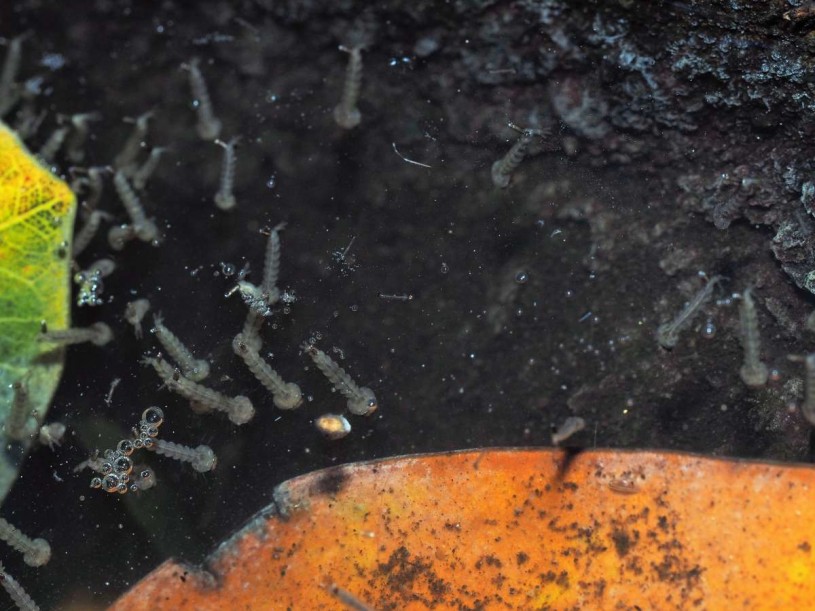
The first thing we noticed in these phytotelmata were hundreds and hundreds of mosquito larvae (photo above). Although the first pond we explored (pictured at top) was shallow and less than two feet long by eight inches wide, it easily contained several hundred mosquito larvae (detail photo of a larva below). This reinforced an important lesson about captured water: the smallest environment can breed incredible numbers of insects! This is why checking for standing water in potted plants, and overturning buckets so they don't collect water is so important. A container left carelessly in the backyard that collects a bit of sprinkler water can, within just a few days, turn into a house full of mosquitoes.
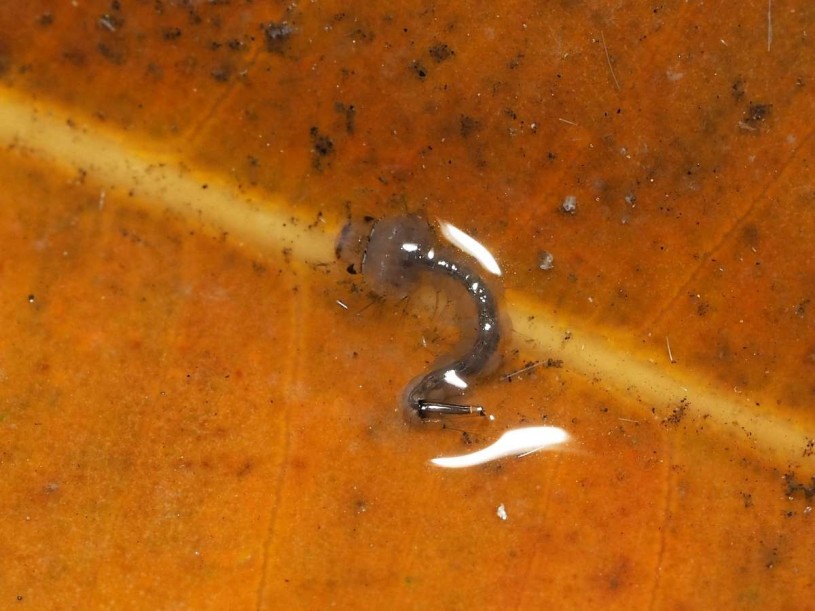
Although there were a number of aquatic maggots that we observed, many of them we will need to collect and rear to adulthood to identify. We did find one real beauty that is instantly recognizable, however! Eristalinus taeniops, an introduced flower fly whose larvae are commonly called "rat-tailed maggots" (see photo below) were buzzing around a particularly stagnant (and stinky!) phytotelma we investigated. It wasn't long before I spotted one of the large, squishy maggots in the putrid water, and thrust my hand into the rotting water! For science! The maggot is pictured below (my hands still smell)!
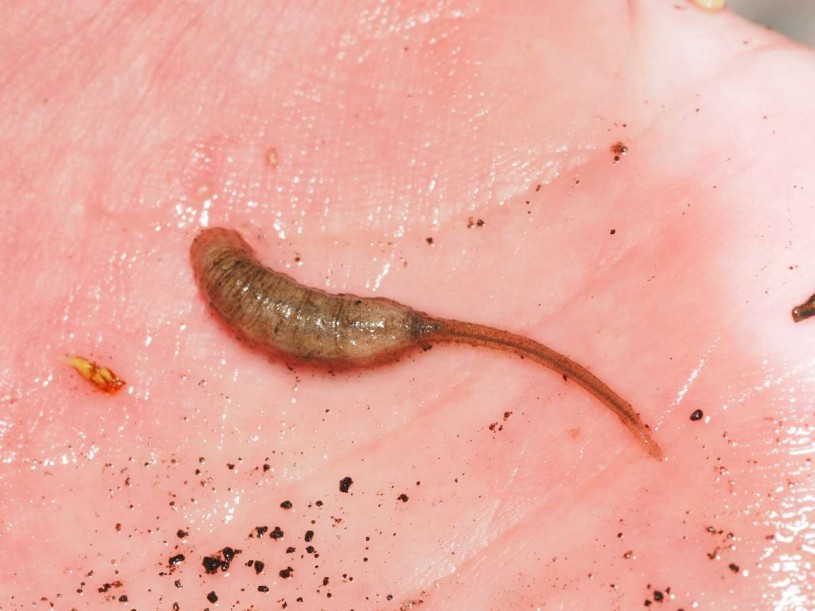
Rat-tailed maggots are able to live in the smelliest, most stagnant of waters because of their breathing tube "tail". Although their beginnings are stinky and they aren't the most attractive of maggots (although I think they're adorable), as adults they are known as Stripe-eyed flower flies and they are the most gorgeous, impressive honey bee mimics you might ever see (photo below).
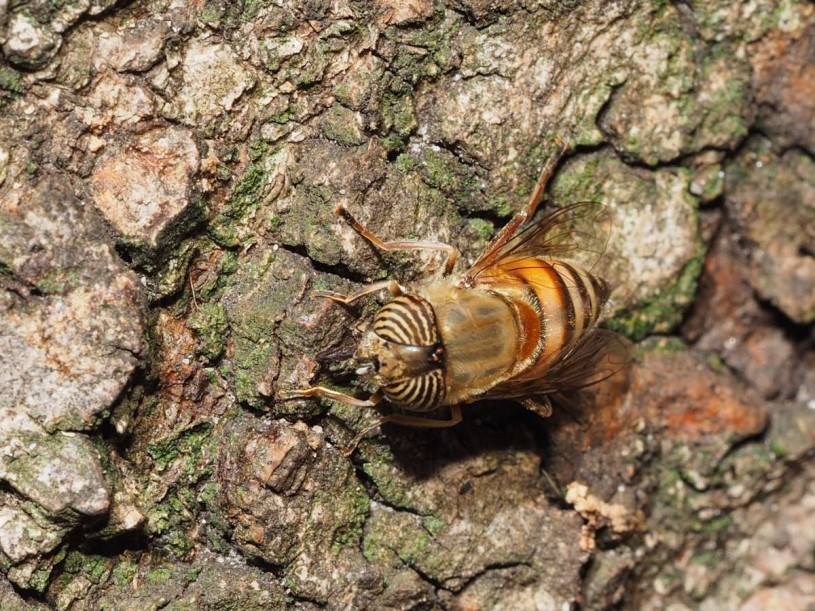
This species was previously found in the Nature Gardens, but attempts to locate the larvae nearby had been unsuccessful. Perhaps these beauties have been developing in the phytotelmata next door for years! It was an amazing morning that exposed a miniature world so close by, but unexplored. It was a great example of what makes urban environments so exciting: they are constantly changing and full of unexpected surprises!